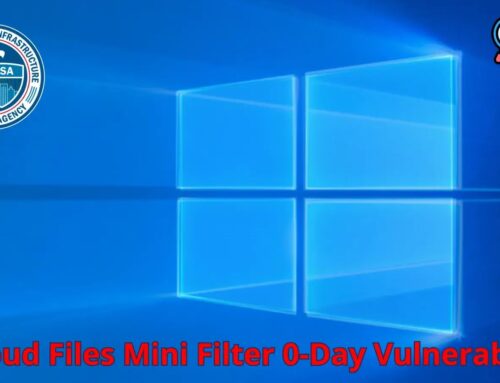
MCDonald’s Free Nuggets Hack Leads to Expose of Confidential Data
Imagine a seemingly harmless app glitch, a simple trick to score free chicken nuggets. Now, imagine that same glitch unraveling into a security nightmare, exposing confidential corporate data and executive details. This isn’t a fictional plot; it’s the alarming reality McDonald’s recently faced, demonstrating how even minor vulnerabilities can snowball into significant data breaches.
The Genesis of the Nugget Nuisance
The incident began as a straightforward application vulnerability, allowing users to exploit a loophole for free food. While the initial focus might have been on the financial loss of a few free nuggets, the underlying issue was far more critical. This “free food exploit” was merely a symptom of deeper insecurities within McDonald’s digital infrastructure. It showcased a lack of robust security controls that, if left unaddressed, could lead to more severe breaches.
From Glitch to Global Exposure
What started as a localized app vulnerability quickly escalated. The security researcher, identified as BobDaHacker, discovered that the initial flaw was a gateway to a treasure trove of sensitive information. The vulnerability, which could be loosely categorized under improper access control or insecure direct object references, allowed the researcher to navigate deeper into McDonald’s internal systems. While a specific CVE number isn’t publicly assigned for this incident as of now, similar issues often relate to frameworks like CVE-2021-33190 (Improper Access Control) or CVE-2022-26134 (Information Exposure).
The researcher’s persistence is noteworthy. After failing to receive a timely response through conventional channels, BobDaHacker resorted to cold-calling McDonald’s headquarters, even leveraging specific security employee names found on LinkedIn. This illustrates a critical point in vulnerability disclosure: when responsible disclosure channels fail, researchers may take extraordinary measures to ensure vulnerabilities are addressed before malicious actors exploit them.
The Data Fallout: What Was Exposed?
The core of the issue wasn’t the availability of free nuggets, but the “expose of confidential data.” While the source doesn’t detail the exact nature of all exposed data, it explicitly mentions “exposed executive data.” This could encompass a range of highly sensitive information, including:
- Executive contact details (phone numbers, email addresses)
- Internal communication records
- Proprietary business information
- Potentially even employee data or customer data if the breach extended further
The exposure of such data poses severe risks, including phishing attacks, corporate espionage, and reputational damage. It underscores the interconnectedness of systems; a flaw in one customer-facing application can inadvertently provide a path to an organization’s most sensitive internal assets.
Remediation Actions: Preventing Future Breaches
The McDonald’s incident serves as a stark reminder of the importance of proactive and comprehensive cybersecurity measures. Organizations must prioritize regular security audits and robust vulnerability management programs. Here are key remediation actions to prevent similar incidents:
- Implement Robust Input Validation and Sanitization: All user input, especially within web and mobile applications, must be rigorously validated and sanitized to prevent injection attacks and exploitation of logical flaws.
- Enforce Strict Access Controls: Implement the principle of least privilege, ensuring users and systems only have access to resources absolutely necessary for their function. Regularly review and update access permissions.
- Conduct Regular Penetration Testing and Bug Bounty Programs: Proactively identify and address vulnerabilities before malicious actors can exploit them. Engaging with ethical hackers through bug bounty programs can offer a continuous stream of vulnerability intelligence.
- Establish Clear Vulnerability Disclosure Policies: Create a transparent and responsive channel for security researchers to report vulnerabilities. A well-defined policy ensures issues are addressed quickly and responsibly.
- Segment Networks and Data: Isolate sensitive data and critical systems from less secure environments. This limits the lateral movement of attackers in case of a breach in one segment.
- Encrypt Sensitive Data: Encrypt data both in transit and at rest, especially confidential and executive information.
- Implement Security Information and Event Management (SIEM): Use SIEM solutions to monitor network activity, detect suspicious behavior, and respond to security incidents in real-time.
Tools for Detection and Mitigation
Organizations can leverage a variety of tools to detect, scan, and mitigate vulnerabilities similar to those exploited in the McDonald’s incident:
| Tool Name | Purpose | Link |
|---|---|---|
| OWASP ZAP (Zed Attack Proxy) | Web application security scanner for finding vulnerabilities in web applications. | https://www.zaproxy.org/ |
| Burp Suite Community Edition | Integrated platform for performing security testing of web applications. | https://portswigger.net/burp/communitydownload |
| Nessus Professional | Comprehensive vulnerability scanner for identifying security weaknesses across IT infrastructure. | https://www.tenable.com/products/nessus/nessus-professional |
| Snort | Open-source network intrusion detection system (IDS) for real-time traffic analysis and packet logging. | https://www.snort.org/ |
| WAF (Web Application Firewall) | Protects web applications from common attacks like SQL injection and cross-site scripting (XSS). (Vendor-specific, e.g., Cloudflare, Imperva) | (Vendor-specific) |
Lessons Learned from the Golden Arches Breach
The McDonald’s “free nuggets hack” turned data breach underscores several critical lessons for businesses of all sizes. Firstly, no vulnerability is too small to be ignored; seemingly minor flaws can lead to catastrophic consequences. Secondly, effective vulnerability management requires an active and responsive approach, including clear communication channels for security researchers. Finally, organizations must assume compromise and implement layered security defenses, from application-level security to robust network segmentation and data encryption, to protect their most valuable assets.





